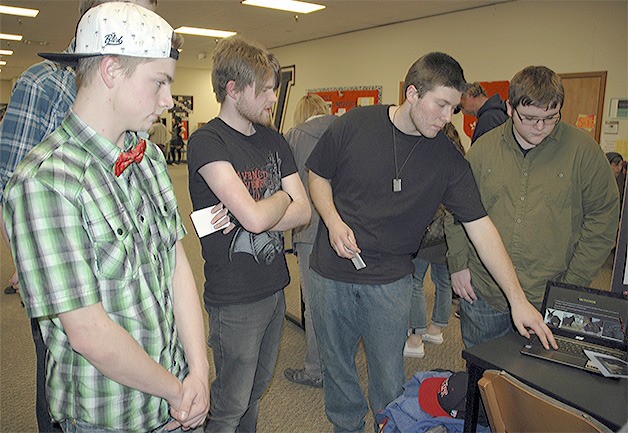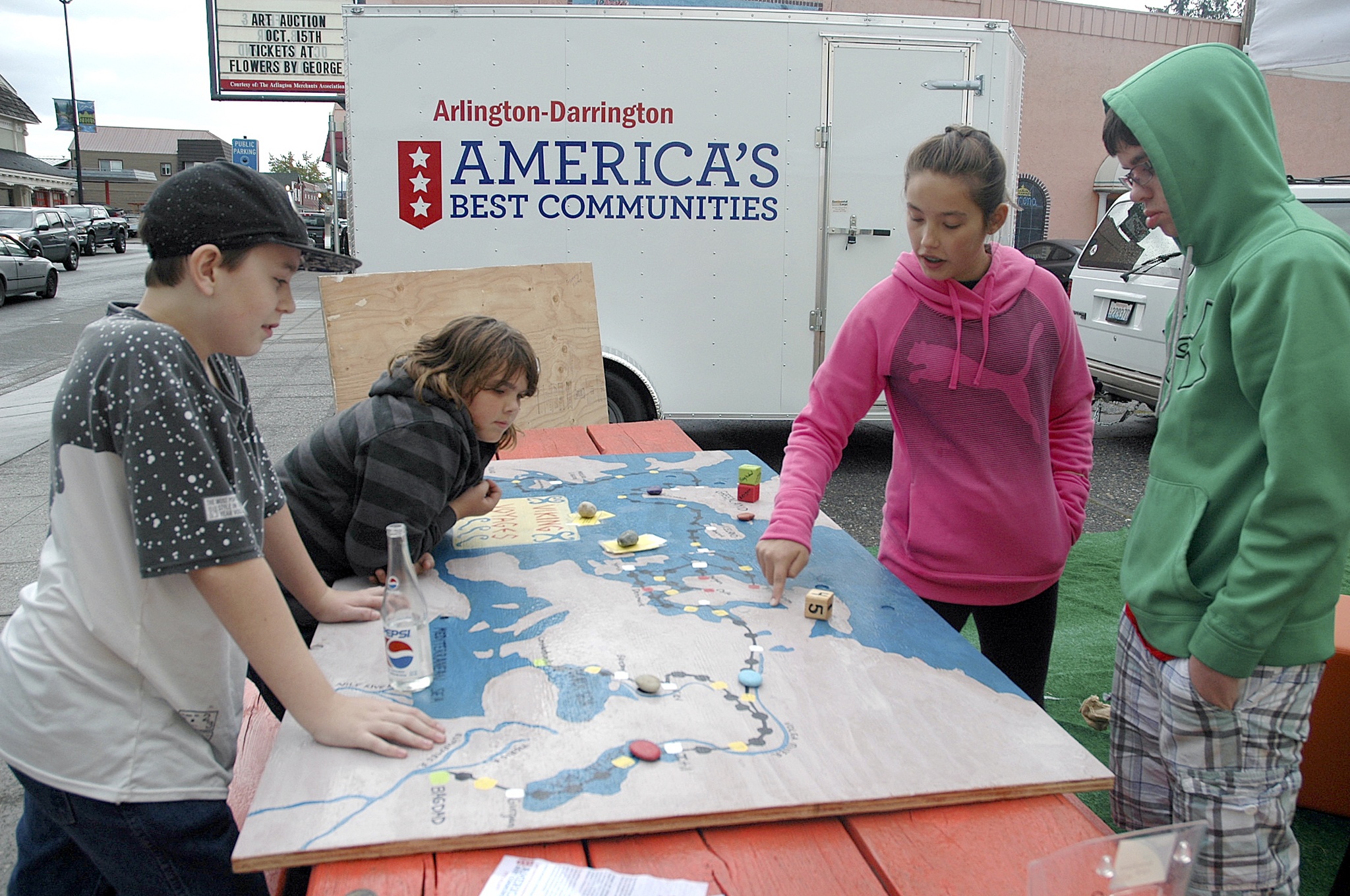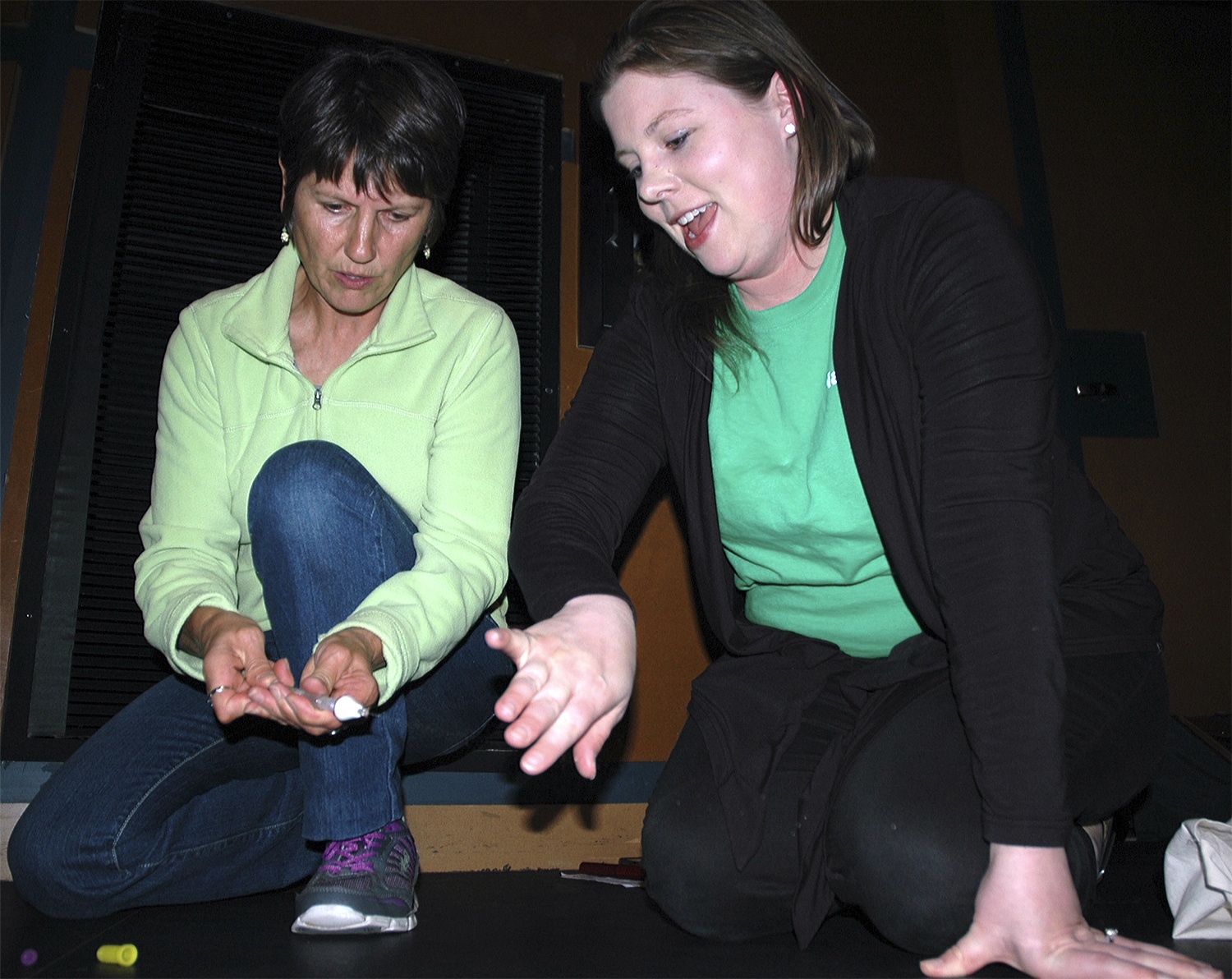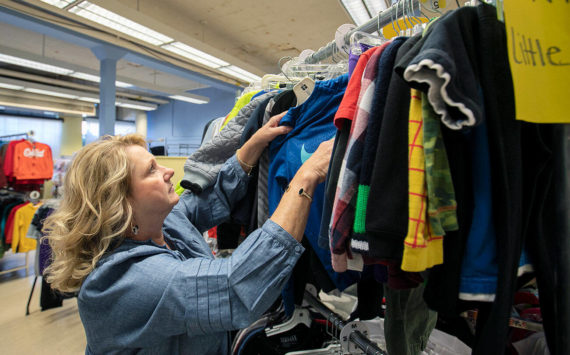ARLINGTON — Weston High School students were encouraged to “Catch the Fever” for STEM by honing their Science, Technology, Engineering and Math skills through research projects on plagues, germs and communicable diseases, as well as how pandemics affect society.
Of the freshmen, sophomores and juniors who presented their research to the public March 4, one group discussed the history of the Black Plague, which persists to this day.
Zack Bailey shared the theory that conquering armies helped spread the plague during the Middle Ages by catapulting infected corpses over city walls, while Christopher Taylor stuck to the verified facts of the plague’s transmission, from rats to fleas to humans, which was fostered by shipping.
“They depended on shipping for trade, so that expanded the reach of the plague,” Taylor said. “It was the global economy.”
Christopher Kearney-Gray noted that there were 10 cases of the Black Plague between 2006-13 in the U.S., but added that it’s easily treatable today, as opposed to the methods used in Medieval times.
“In some cases, they would rub chickens on the wounds,” Isiah Mireau said. “In others, they used leeches, which actually work about half the time, if it was septicemic but not pneumonic yet. And of course, an old standby was to purge the earth of Jews, because when they’d tortured Jews, they admitted the plague was their fault.”
If the Black Plague were to occur locally, Kearney-Gray explained that his group had devised a four-step epidemic plan:
1. Inform the public through news media and social media.
2. Close off the city to keep track of everyone.
3. Identify the infected by having everyone meet at an enclosed community space, like Arlington High School, to get checked out, whether they seem symptomatic or not.
4. Identify when, where and how the disease spread.
Another group tackled the Chikungunya virus, which is similar to the current Zika virus, in that it originated in Africa and has spread through mosquito bites.
Mary Stroklund noted that one of the Chikungunya virus’ hazards is that those who are infected can go without symptoms for as long as a week, allowing them to act as carriers and spread the disease.
“There are miniature epidemics going on in Africa and the Caribbean right now,” Stroklund said. “But because of the Zika virus, the Chikungunya virus has been put on the back burner.”
Stroklund warned that Southern American states, such as Florida, could see outbreaks as temperatures increase and mosquitos become more active.
“We learned how quickly viruses can spread, even today,” Celeste Malone said. “We all come into contact with so many people with travel, and we can be so oblivious to what we’re exposing ourselves to.”
While underclassmen shared their knowledge of viruses and diseases, seniors showed off projects they’d designed to assist future students in achieving their goals. Tahiza Alvarado and Michaela Reinke took it to an Inception-level of going deeper by creating a project that would prepare other students for their senior projects.
Instead of documenting what they learn, as per previous senior projects, future students would be able to create career paths and resumes, complete with job shadowing visits.
Alvarado elaborated that they’d mapped out a website with monthly deadlines, for both parents and students to follow.
“We had to figure out what kinds of challenges those students would be facing in the future,” Reinke said. “So we came up with a senior project template that would prepare them for colleges, trade schools, the military or entering the work force straight out of high school.”







